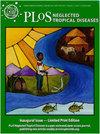印度泰米尔纳德邦拯救蛇类以保护人类生命和促进蛇类保护所面临的挑战
IF 3.4
2区 医学
Q1 Medicine
引用次数: 0
摘要
背景人蛇冲突在世界各地都很常见,经常导致蛇咬伤。全世界每年有超过 125,000 人死于蛇咬伤,400,000 人终身残疾。仅印度每年平均就有约 58,000 人死于蛇咬伤。随着人类的发展迅速扩展到郊区和农村地区,蛇也随之迁移,居民在住所内发现蛇的事件也越来越多。大多数人对蛇有天生的恐惧,再加上几个世纪以来文化和神话的负面影响,人们经常试图杀死蛇。蛇类救援人员是清除蛇类并将其转移到安全区域的志愿者。这是一项充满风险的工作,一旦被咬伤,可能会造成致命后果。这些志愿者的时间或交通成本大多得不到经济补偿,但他们选择这样做是因为他们热爱蛇类、保护自然以及帮助他人的利他主义本质。蛇类救援人员通常没有接受过正规培训,也没有经费,导致他们在没有足够的安全设备或所需技能的情况下不恰当地移除蛇类,从而无法安全地完成任务。因此,必须确定他们所面临的挑战和要求,以促进安全救蛇,同时保护人类生命安全。方法/主要发现 在本研究中,我们编制了一份在线问卷,并在获得书面知情同意后对印度泰米尔纳德邦的 152 名蛇类救援人员进行了访谈,以确定他们在安全救援蛇类方面所面临的挑战和需求。结果表明,大多数救助者为男性,他们进行蛇类救助的时间长短不一。他们大多没有接受过正规培训,都是被蛇咬伤的。他们自己花钱购买处理蛇的设备,如果在救援过程中被蛇咬伤或受伤,则自己花钱进行治疗。结论/意义 救援人员强调,泰米尔纳德邦迫切需要正规培训、安全设备和标准的蛇类救援规程。总之,这项研究表明,有关当局,特别是印度各邦林业部门的野生动物处,应该对蛇类救援工作进行适当监管,并为他们提供正规培训、必要的设备、医疗保险和适当的认可,以便他们安全地将蛇从人类住所中移出,并管理蛇和人类的安全。他们还可以充当教育者,传播有关蛇咬伤的预防和急救措施以及蛇的生态重要性的信息。本文章由计算机程序翻译,如有差异,请以英文原文为准。
Challenges in rescuing snakes to protect human lives and promote snake conservation in Tamil Nadu, India
Background Human-snake conflicts are common worldwide, often resulting in snakebites. Snakebite envenoming causes over 125,000 deaths and 400,000 permanent disabilities worldwide every year. India alone accounts for an average of ~58,000 annual snakebite-induced deaths. As human developments rapidly expand into suburban and rural areas, snakes are being displaced and incidences of residents finding snakes within their dwellings are increasing. Most people have an innate fear of snakes, compounded by centuries of negative influence from culture and mythology manifesting in people often attempting to kill snakes. Snake rescuers are volunteers who remove and relocate snakes to safe areas. This is a risky job that poses potentially fatal implications if bitten. These volunteers mostly receive no financial compensation for their time or transportation costs, but they choose to do it for their love of snakes, conservation, and for the altruistic nature of helping others. Snake rescuers often receive no formal training and are unfunded resulting in removing snakes improperly without adequate safety equipment or the required skill set to safely complete the task. Therefore, it is critical to determine their challenges and requirements to promote the safe rescue of snakes while protecting human lives. Methodology/Principal findings In this study, we developed an online questionnaire and interviewed 152 snake rescuers in Tamil Nadu, India following written informed consent to determine their challenges and needs for rescuing snakes safely. The results demonstrate that most rescuers are males, and they conduct snake rescues for varying lengths of time. They mostly receive no formal training and are bitten by snakes. They spend their own money on the purchase of snake-handling equipment and on treatments if bitten or injured during a rescue. Conclusions/Significance The rescuers highlighted the urgent need for formal training, safety equipment and standard protocols for rescuing snakes in Tamil Nadu. Overall, this study demonstrates that snake rescuing should be appropriately regulated by the authorities, in particular the Wildlife Division of State Forest Departments in India, and formal training along with necessary equipment, medical insurance and appropriate recognition should be provided to them to safely remove snakes from human dwellings and manage the safety of both snakes and humans. They can also act as educators to disseminate information about the preventive and first aid measures for snakebites as well as the ecological importance of snakes.
求助全文
通过发布文献求助,成功后即可免费获取论文全文。
去求助
来源期刊

PLoS Neglected Tropical Diseases
Medicine-Infectious Diseases
CiteScore
7.40
自引率
10.50%
发文量
723
审稿时长
2-3 weeks
期刊介绍:
PLOS Neglected Tropical Diseases publishes research devoted to the pathology, epidemiology, prevention, treatment and control of the neglected tropical diseases (NTDs), as well as relevant public policy.
The NTDs are defined as a group of poverty-promoting chronic infectious diseases, which primarily occur in rural areas and poor urban areas of low-income and middle-income countries. Their impact on child health and development, pregnancy, and worker productivity, as well as their stigmatizing features limit economic stability.
All aspects of these diseases are considered, including:
Pathogenesis
Clinical features
Pharmacology and treatment
Diagnosis
Epidemiology
Vector biology
Vaccinology and prevention
Demographic, ecological and social determinants
Public health and policy aspects (including cost-effectiveness analyses).
 求助内容:
求助内容: 应助结果提醒方式:
应助结果提醒方式:


